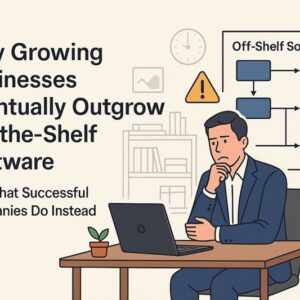หลายคนที่เริ่มเรียนเขียนโปรแกรมมักได้ยินคำแนะนำเดิม ๆ เช่น “ต้องเขียนโค้ดเยอะ ๆ” หรือ “เดี๋ยวก็เก่งเอง” แต่คนที่เคยลองจริงจะรู้ว่า… ปัญหาไม่ใช่ความขี้เกียจ แต่คือโครงสร้างการเรียนที่ผิดตั้งแต่ต้น บทความนี้จะอธิบาย Pain Points ที่แท้จริงในการเรียน Software Development และแนวทางแก้ที่ช่วยให้เรียนได้ ชัดขึ้น เหนื่อยน้อยลง และไม่ท้อกลางทาง
Read MoreLearning software development is often described as “just practice more” or “keep coding.” But anyone who has tried knows the truth: The pain is not lack of effort — it’s lack of structure. This article breaks down the real pain points people face when learning software development and, more importantly, how to solve them in […]
Read MoreAI 模型更新很快,但版本号的变化, 并不总能直接告诉我们:实际使用中有什么不同?
Read MoreAIの進化は非常に速く、バージョン番号だけを見ても 実際に何が変わったのか分かりにくいと感じる方も多いでしょう。
Read Moreหลายคนเห็นเลขเวอร์ชัน AI เปลี่ยนเร็วมาก แต่คำถามสำคัญคือ ChatGPT 5.2 ต่างจาก 5.1 อย่างไร และต่างแบบที่ใช้งานจริงรู้สึกได้หรือไม่?
Read MoreAI models improve fast, but version numbers alone don’t tell the full story. What actually changed between ChatGPT 5.1 and ChatGPT 5.2? And more importantly — what difference does it make in real use?
Read More引言 大多数企业在创业初期,并不会选择定制化软件。 Excel、表格工具、各类SaaS系统 上线快、成本低,看起来“够用”。
Read Moreはじめに 多くの企業は、最初からカスタムソフトウェアを導入するわけではありません。
Read Moreบทนำ ธุรกิจส่วนใหญ่ไม่ได้เริ่มต้นด้วยซอฟต์แวร์เฉพาะทาง (Custom Software) ในช่วงแรก Excel, Google Sheets, หรือ SaaS ต่าง ๆ ดูเหมือนจะเพียงพอ ใช้งานง่าย ราคายอมรับได้ และช่วยให้เริ่มต้นได้เร็ว
Read MoreIntroduction Most businesses don’t start with custom software — and that’s perfectly fine. In the early stages, spreadsheets, SaaS tools, and ready-made platforms feel fast, affordable, and “good enough.” They help teams move quickly and validate ideas without heavy investment.
Read More


